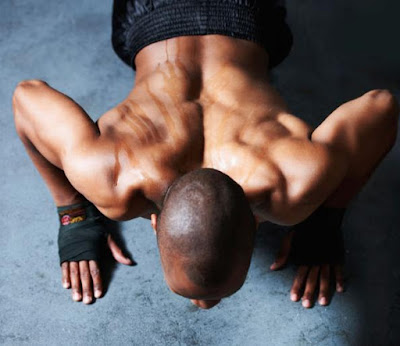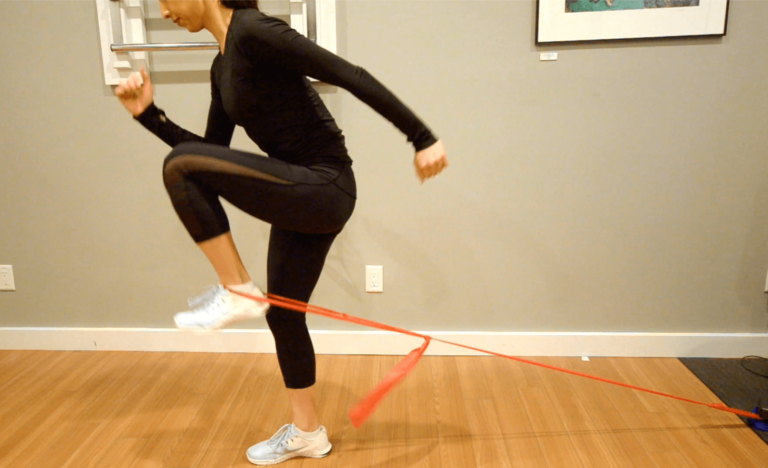7 Muscles Everyone Ignores
While the showoff muscles get all the acclaim, they’d be nothing without the supporting cast of smaller stabilizers and assisting muscles. Ignore them, and you’ll eventually pay the price. The cost? Injury. Missed workouts. Painful runs. An unbalanced body. Wondering if your’e guilty? Here, experts discuss the most neglected muscles, why they’re important, and how to strengthen them for an even, injury-free physique.
The Rotator Cuff
Deltoids the size of grapefruits won’t do you much good if you tear your rotator cuff, which is a group of four muscles that literally form a “cuff” to stabilize the shoulder joint. Injure it, and you’ll restrict your range of motion, making overhead movements painful. Shoulders have the most mobility, so they’re also the most unstable, keep them strong by taking a ‘pre-hab’ versus a ‘rehab’ approach. You typically only see people doing these exercises after they’re injured.
Strengthen it: Attach light to medium resistance tubing to a door hinge, then stand with your left side to it, grasping the handle of the tubing with your right hand. Bend right arm at a 45-degree angle to your side (your elbow is at your hip and your forearm is at a 90-degree angle in a handshake position), then rotate your arm at the elbow, pulling the tubing out towards the right side without pulling your upper arm away from your body— like a door opening on a hinge. Next, stand with your right side towards the door hinge. With your right arm bent at a 45-degree angle next to your side, grasp the handle of the tubing with your right hand and rotate your arm at the elbow, pulling the handle in towards the center of your body. Repeat 10 to 12 times on each side, alternating sides for each set.
The Erector Spinae
You probably work your upper back and traps for that wide expanse, but you’re likely neglecting the very muscles that keep you upright. The erector spinae is actually a bundle of muscles and tendons that extend throughout the lower, mid and upper back. They’re more about posture than anything. Weak spinal erectors and poor posture may lead to back pain and sports injuries.
Strengthen it: Lie face down over a back extension machine with heels anchored. (You can also use a fitness ball if you have a partner to hold down your ankles). Place your hands behind your head with elbows out to the sides. Slowly raise your torso (don’t swing) just until your body forms a straight line, with ears, shoulders, hips, knees and ankles in line. Slowly return back to start. Do three sets of 10-12 reps.
The Gluteus Medius and Minimus
Few muscles get as much attention as the gluteus maximus, yet it could not reach its full potential without these two lesser-known helpers, which serve to stabilize the pelvis— especially when standing on one leg. They’re vital for any athletic performance and crucial for walking and climbing stairs. Plus, when they’re toned they lift up the glutes.
Strengthen it: Using a heavy resistance tubing circle, step inside the tubing with both feet and fasten around each ankle. Stand in a wide sports stance, knees slightly bent, toes pointed straight ahead and hands on hips or out in front. Step out to the side and continue walking sideways for 8-10 steps, then repeat in the opposite direction. Perform 2-3 sets, 2-3 times a week.
The Tibialis Anterior
Have you ever suffered from shin splints? If so, listen up: failing to strengthen this vital muscle—which runs along the bottom part of your leg, next to your shin bone, and plays a huge role in forming a healthy gait—can increase your risk of getting those nagging lower-leg pains. The tibialis anterior plays a vital role in walking, running and sprinting.
Strengthen it: Do this 2-3 times a week: Sit on a chair with your feet flat on the floor, then—keeping your heels on the floor—raise your toes off of it for 8-10 reps. To increase the challenge, you can balance a small dumbbell (5 lbs) on your foot for added resistance. Or you can also sit on a high chair or bench, with enough room for your feet to dangle, and do the same exercise with a dumbbell between them.
The Obliques
All the crunches in the world won’t get you six-pack abs without working these puppies. The obliques include the external and internal obliques, which cross diagonally from the bottom of your rib cage to your pubic area. Functionally, they keep you stable in an upright position. Cosmetically, the obliques form a ‘frame’ around the mid-section of your abs. Problem is, most people believe they’re strengthening them by doing side bends— but they won’t work.
Strengthen it: Do Bicyle Crunches. Lie on your back with your legs extended, feet about 10 inches off the ground, and your hands behind your head. Rotate your right elbow toward your left knee, keeping your opposite elbow on the ground and your opposite leg straight. Exhale as you rotate, thinking about your ribs squeezing toward your hips, then straighten your leg back to the start position. Pause, then repeat the motion to the opposite side. Do 8-10 reps 2-3 times a week.
The Hamstrings
Sure all those squats, dead lifts and lunges indirectly hit the hamstrings—but not enough. Most guys are quad dominant and ignore their hamstrings, which are only about 60 percent as strong as the quads. So what’s the big deal? Any imbalance of opposing muscle groups, like big quads and weak hamstrings, can cause unequal pull on the joint. And in this particular case, that sets the stage for knee injuries.
Strengthen it: Prone hamstring curl machines and standing leg curl machines are both effective, or try this leg curl move using an exercise ball. Lie on the floor with your heels on top of the ball, toes up toward the ceiling, and legs slightly bent. Lift the hips by pushing down on the ball with your heels, then roll the ball towards you by pulling your heels towards your seat, kneecaps pointed towards the ceiling. Keeping the hips off the ground, roll the ball back out to the starting position and repeat. Do 8-10 reps 2-3 times a week.
The Forearm Extensors
Since these muscles are responsible for gripping heavy things, like dumbbells and barbells, weak ones my hamper your ability to train larger muscles and weaken your entire workout—not to mention your tennis backhand. We get the forearm flexors with all pulling moves or curls or even tricep presses but nothing other than reverse biceps curls hits those muscles.
Strengthen it: While watching TV, you can simply squeeze and release a tennis ball, doing 3 sets of 10 reps 2-3 nights a week. Or try this: tie a light weight to the end of a rope, then tie the rope around a piece of broom handle or a wooden dowel. Stand with arms extended in front of you and roll the weight up and then down by rotating the broom towards you and away from you. Do 2-3 reps.


